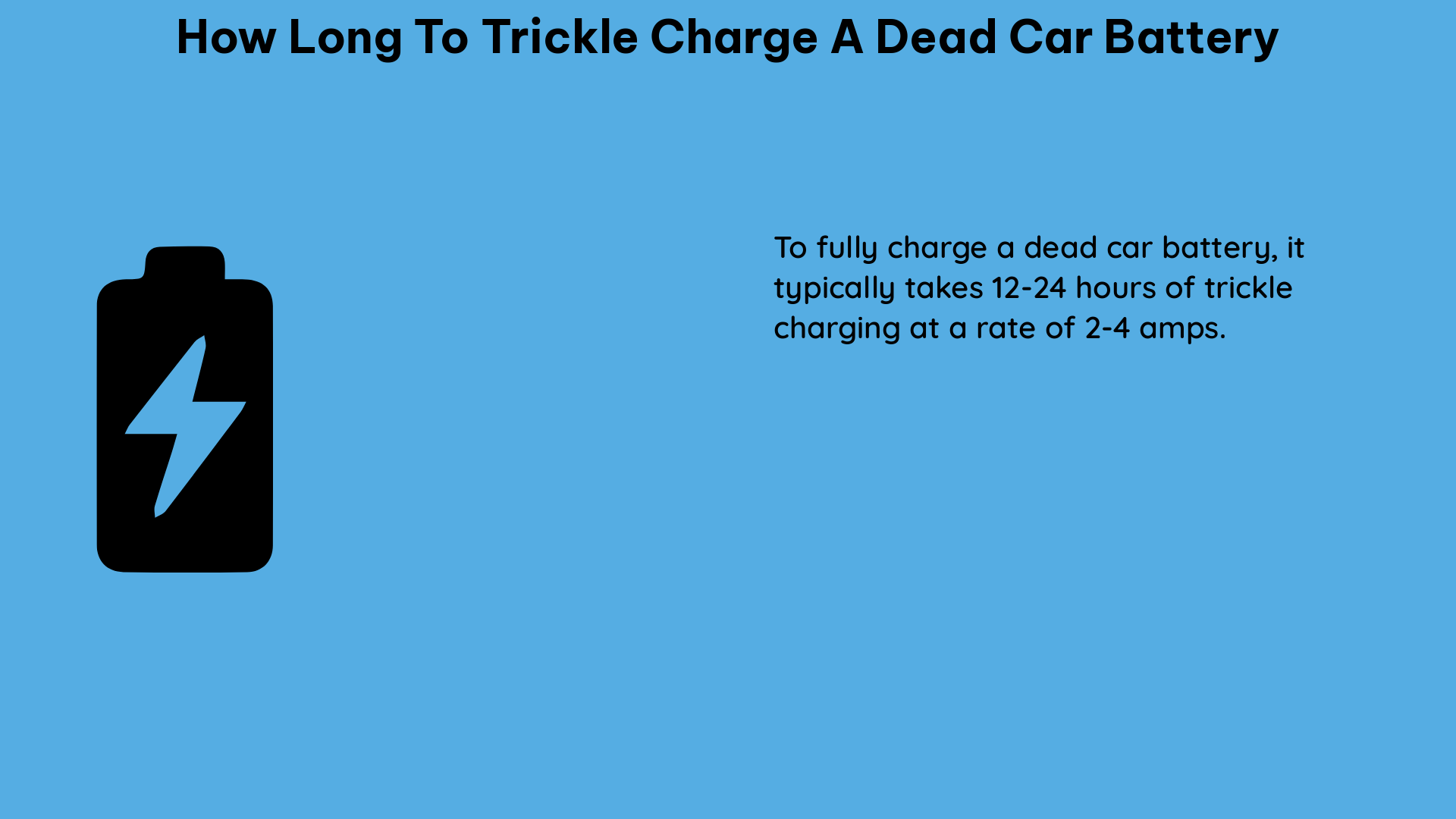Trickle charging a dead car battery can be a delicate process, requiring careful consideration of various factors to ensure the battery’s longevity and prevent potential damage. In this comprehensive guide, we’ll dive deep into the intricacies of trickle charging a dead car battery, providing you with the technical knowledge and practical steps to get your vehicle back on the road.
Understanding Trickle Charging
Trickle charging is a slow, low-current charging method designed to maintain a battery’s charge rather than quickly recharging a completely depleted one. This gentle approach helps prevent overcharging, which can lead to severe damage to the battery, such as corrosion, sulfation, and even explosion.
Factors Affecting Trickle Charging Time

The time required to trickle charge a dead car battery depends on several key factors:
-
Battery Capacity: The battery’s capacity, measured in ampere-hours (Ah), determines the amount of energy it can store. Larger capacity batteries will take longer to trickle charge compared to smaller ones.
-
Charger Output: The trickle charger’s output, measured in amps (A), determines the rate at which the battery is charged. A higher output current will charge the battery faster, but it’s crucial to avoid exceeding the recommended charging rate.
-
Battery State of Charge: The battery’s current state of charge, or how depleted it is, will significantly impact the trickle charging time. A completely dead battery will take longer to reach a full charge compared to a partially discharged one.
-
Battery Age and Condition: As a battery ages or experiences wear and tear, its internal resistance increases, which can slow down the trickle charging process. Older or damaged batteries may require more time to reach a full charge.
-
Temperature: Ambient temperature can also affect the trickle charging process. Colder temperatures can slow down the charging rate, while warmer temperatures can speed it up.
Calculating Trickle Charging Time
To calculate the approximate time required to trickle charge a dead car battery, you can use the following formula:
Charging Time (hours) = Battery Capacity (Ah) / Charger Output (A)
For example, if you have a 60Ah battery and a trickle charger with a 10A output, the calculation would be:
Charging Time = 60Ah / 10A = 6 hours
However, it’s important to note that this is a theoretical calculation, and the actual charging time may be longer due to the factors mentioned earlier.
Monitoring the Trickle Charging Process
During the trickle charging process, it’s crucial to monitor the battery’s voltage and current to ensure the charging is progressing as expected and to avoid overcharging. Here are some key steps to follow:
-
Check the Battery Voltage: Use a multimeter to regularly check the battery’s voltage. The voltage should gradually increase as the battery charges, reaching around 14.4V for a lead-acid battery when fully charged.
-
Monitor the Charging Current: Observe the charging current, which should decrease as the battery’s state of charge improves. If the current remains high or increases, it may indicate an issue with the battery or the charging process.
-
Stop Charging at the Appropriate Time: Once the battery voltage reaches the recommended level (around 14.4V for lead-acid), stop the trickle charging process to prevent overcharging and potential damage.
Precautions and Safety Considerations
Trickle charging a dead car battery requires careful attention to safety. Here are some important precautions to keep in mind:
-
Ventilation: Ensure the charging area is well-ventilated, as the charging process can release hydrogen gas, which is highly flammable.
-
Disconnect the Battery: Before connecting the trickle charger, disconnect the battery from the vehicle to prevent any electrical issues or short circuits.
-
Avoid Overcharging: Regularly monitor the battery’s voltage and current to avoid overcharging, which can lead to severe damage.
-
Use the Correct Charger: Ensure you’re using a trickle charger specifically designed for your battery type (e.g., lead-acid, lithium-ion) and capacity.
-
Follow Manufacturer Instructions: Carefully read and follow the trickle charger manufacturer’s instructions to ensure safe and effective operation.
Conclusion
Trickle charging a dead car battery requires patience, attention to detail, and a thorough understanding of the process. By considering the factors that affect charging time, monitoring the charging progress, and taking necessary safety precautions, you can successfully revive your battery and get your vehicle back on the road. Remember, the key to successful trickle charging is to take it slow and avoid any potential pitfalls that could lead to battery damage.
References:
- Electronics Stack Exchange – For how long should I charge my dead car battery without damaging it?
- Subaru Outback Forums – How often to trickle charge car batteries?
- RedFlagDeals Forums – Trickle charger has been plugged for 3 days on dead battery

The lambdageeks.com Core SME Team is a group of experienced subject matter experts from diverse scientific and technical fields including Physics, Chemistry, Technology,Electronics & Electrical Engineering, Automotive, Mechanical Engineering. Our team collaborates to create high-quality, well-researched articles on a wide range of science and technology topics for the lambdageeks.com website.
All Our Senior SME are having more than 7 Years of experience in the respective fields . They are either Working Industry Professionals or assocaited With different Universities. Refer Our Authors Page to get to know About our Core SMEs.